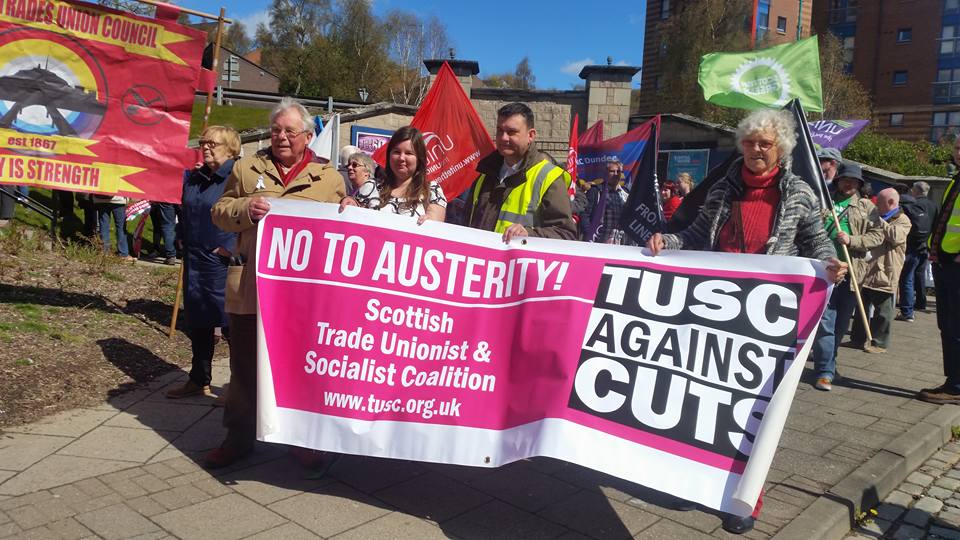The guard stays on the train – RMT members defeat ScotRail bosses

By Philip Stott
After a major campaign of strike action over the summer, ScotRail guards have won a big victory in their fight to keep the conductor on the train. This breakthrough proves that determined strike action works.
The agreement will also be seen by RMT members facing similar disputes with franchise holders across Britain as a major boost.
ScotRail management had insisted that new trains on the electrified parts of the Scottish rail network, due to be introduced from next year, would have seen the conductor’s role removed. In this they were fully supported by the SNP-led Scottish Government.
This led to a 75% vote for strike action by RMT members who work as guards on ScotRail, which is owned by the Dutch rail company, Abellio. Rail unions in the Netherlands have also been involved in industrial action to defeat attempts by Abellio to remove trained guards from rail services.
Over June and July workers ScotRail guards took a total of 12 days of strike action in their dispute.
Following talks, which included the train drives union Aslef who were also opposed to the removal of the guards, management have now conceded that the skilled guard will be retained on all the new trains.
As Mick Cash of the RMT pointed out: “This agreement guarantees a Guard on every new electrified train and that the Conductor will retain their full competency (rules, track safety, evacuation). In addition ScotRail confirm that trains operating these services will not run without a competent conductor on board.”
Safety
The RMT’s stand against Driver Only Operation and Driver Controlled Operation on the trains was a strike primarily about safety. The role of the guard is a safety-critical one.
Train guards go through months of specialised training to acquire a skilled knowledge of the train and the railway. In all they are tasked in 35 areas of safety responsibility; from dealing with a train accident to signalling systems to working on electrified lines.
ScotRail bosses claimed that as the driver has the necessary skills there is no need for another skilled staff member on the train. But as the RMT have consistently pointed out, what if the driver is injured or incapacitated?
The huge public support for the RMT’s strike action was testimony to the fact that the passengers believed the union and not the bosses.
Scotrail/Abellio management behaved scandalously, attempting to bypass the union by resorting to social media and mailings in a campaign of misinformation with union members. They indulged in a campaign aimed at undermining the support from passengers claiming: “The public will be astonished to hear that this is a strike only about who opens and closes doors on trains, nothing more.”
As the RMT explained: “The model that ScotRail wanted to follow delivers a unsafe method of operation for Scotland’s rail users. Indeed the whole project is about two things; 1) cutting ScotRail’s wage bill and 2) maximising shareholder profit.”
Their was widespread anger among RMT members at the conduct of the Scottish Government during the strike action. Both Nicola Sturgeon and SNP transport minister Humza Yousuf read only from the prepared script of ScotRail management.
Sturgeon claimed, falsely, in the Scottish parliament that “the dispute is about who pushes the button to open the door on the train”. This is exactly the line trotted out regularly by ScotRail/Abellio bosses.
Public ownership
Socialist Party Scotland and Scottish TUSC called for the Scotrail franchise to be taken back into public ownership two years ago, rather than handed to Abellio with profit going to shareholders instead of being invested into the service.
This could have been done if the SNP-led Scottish Government had been prepared act when the franchise was up.
Excuses such as it being against EU rules, that we also heard over CalMac, are no excuse for not standing up and fighting against the big-business dominated EU.
The RMT will now continue the campaign to “keep the guard on the train” Next in their sights is to fight for a guard on those services that currently run as Driver Only Operation in Scotland.



